Our hope was that the kids would use glue sticks for their collages so that they could take them home in time for Valentines day. As it turns out, 1 and 2 yr olds would much prefer to to squeeze white or colored glue rather than rub an unfamiliar clear stick onto their paper- imagine that!
For the last part of class, the teachers brought out our super fun floor painting tools and a canvas for some gross motor painting. The toilet plungers made really cool circle prints, but the child-sized broom was probably the hottest commodity.
After each class, we added painters tape to the canvas to preserve some of their work before the next class got to the painting. Once all of the classes have had a chance to add to the 2 canvases, we’ll peel off the tape and see if we can find the contrast between the classes.
While some kids got messy on the floor, the table was full of various tools for more collaborative painting.
The 3s, 4s, and 5s classes worked on an entirely different type of beading project. They began with a block of wood, markers, paper shapes, nails, and mallets to make the base for beaded sculptures. Of course they loved the hammering part!
After drawing on the wood and hammering nails and paper shapes onto their blocks, the kids attached craft wire to the nails (we used Twisteez craft wire, which is super flexible and coated with colorful plastic). Finally the kids threaded the wire with beads before attaching the other end of the wire to another nail on the wood block.
Some chose to embellish their sculptures with glue, glitter and more collage items.
We even had a sibling pop in to help her older sister finish her sculpture!
Don’t you love how they turned out?! Once finished, kids can experiment with bending the wire to create all kinds of new sculpture forms.






















































































































































